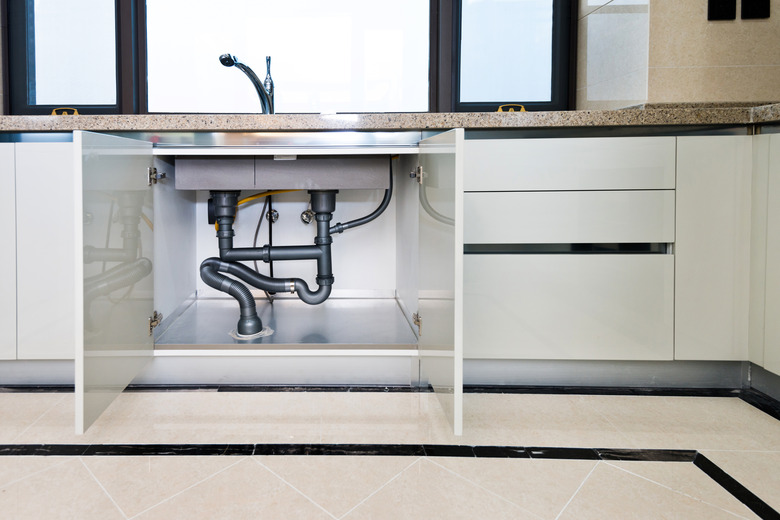What Is The Common Water Line Size Under A Sink?
The most common diameter for pipes — actually hoses — under a sink is 1/2 inch. OK, that was easy. If all plumbing was this straightforward, plumbers wouldn't be able to charge their hefty fees because homeowners could do everything themselves.
If you've ever done any sink plumbing, you know that there's a complication that can result in repeated trips to the hardware store just to install a faucet, and it might ultimately force you to call a plumber. It doesn't have to do with hose diameter but with the size of the connectors on the ends of the hoses and on the faucet shutoff valves. There are three standard sizes, and the connectors on the faucet and shutoff valve are often different, so you need a hose that matches at both ends.
Read more: How to Install a Kitchen Faucet
Standard Sink Supply Line Size
Standard Sink Supply Line Size
The copper, galvanized steel or PEX pipes that constitute a residential water supply system are of two main diameters. The main pipes, which are the ones that come off the main water supply and the water heater, are 3/4 inches in diameter. The branch lines, which are the ones that feed individual fixtures, are 1/2 inch in diameter.
The 1/2-inch supply pipes that come to the sink each terminate with a shutoff valve, and this valve is one of the two factors that determine the connector size on the faucet hose. The inlet must match the supply pipe, and it can be a 1/2-inch female pipe thread (FPT) connector for galvanized pipes, a 1/2-inch compression or sweat connector for copper pipes or a 1/2-inch barbed connector for PEX pipes. If you're installing a faucet, however, the outlet port is the one that interests you.
Faucet supply hoses can have one of three types of female connectors:
- 1/2-inch slip joint (SJ), which is so named because it has an insert that slips into the male connector to make the connection watertight.
- 1/2-inch outside diameter (OD), which is similar to an SJ fitting except that it lacks the insert.
- 3/8-inch OD, which is the same as a 1/2-inch OD fitting, but it's smaller.
Under-Sink Water Supply Line Types
Under-Sink Water Supply Line Types
The two most common types of faucet supply hoses are made from flexible plastic and braided metal. The metal ones last longer, especially when used for hot water, and they cost a bit more. Corrugated copper used to be a thing, but you seldom see it under sinks anymore, mostly because, as it ages, it becomes anything but flexible and leaks.
Depending on the accessories that go with your faucet, you may see other water supply line types under the sink. The extra hoses that connect the faucet diverter to the sprayer or, if the faucet is a widespread model, to the handles, are also usually 1/2 inch in diameter, but they have proprietary quick-connect fittings that vary by manufacturer. If you have a water purifier, it may be connected to the water supply with 1/4- or 3/8-inch copper tubing.
Hot and Cold Water Lines for a Washer
Hot and Cold Water Lines for a Washer
The supply hoses for a washing machine are usually 3/4 inches in diameter, and they differ from faucet supply hoses in another key way. The washing machine has standard hose thread connections, as do the shutoff valves. Consequently, the supply hoses have female hose thread connectors on both ends.
You could, if you wanted, make washing machine hoses out of a length of old garden hose, but it probably wouldn't last long. Standard washing machine connectors are made from durable rubber, which doesn't degrade and won't leak even after years of service.
